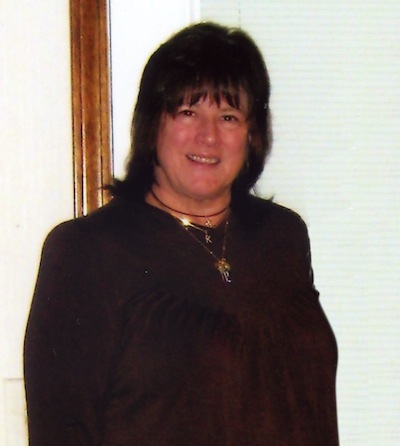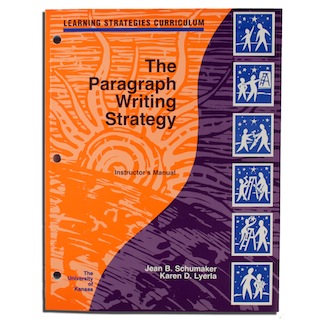Karen D. Lyerla, M.S.
Affliations
- Retired Department Chairperson of Special Services
- Lawrence High School
- Lawrence, KS
- Consultant and Certified Professional Development Specialist
- University of Kansas Center for Research on Learning
- Lawrence, KS
- Project Coordinator
- Edge Enterprises, Inc.
- Lawrence, KS
My Background and Interests
I am the first woman in my dad’s or mother’s family to receive both bachelor’s and master’s degrees, and I’m deeply proud to represent my Lyerla and Cromer families in this endeavor. I once thought I would like to become a foreign diplomat. Realizing that mastery of a foreign language would be required for this career, I started learning two languages. However, foreign languages and I did not get along. Next, I aspired to become a high school social studies teacher, but my interviewers seemed much more interested in my coaching abilities—which were few and none. Undaunted, I continued to pursue a career in education becoming one of, if not the first, secondary teacher in the master’s program in learning disabilities at the University of Kansas. Dr. Gordon Alley was my deeply treasured advisor and mentor. With his enthusiasm and dedication, he soon injected me wholeheartedly with his educational dreams of a future involving successful young adults with learning disabilities. I never looked back. Even though I have retired after 35 years of teaching at-risk youths, I continue to promote Dr. Alley’s and my dreams for all young adults.
My interests entail a broad spectrum of hobbies and activities. These include a tremendous love of reading, especially trash flash romance and science fiction novels. I also keep up on reading about royalty around the world. I play tennis, swim, and work out with Pilates several times weekly. I adore travel and have been known to bicycle England and Scotland, scooter through Europe, relax in Kauai and Oahu, ski all over the U.S. and Europe, explore the United States, and discover much of Alaska. I love music and dancing. Having chaired my high school’s 40th class reunion, I also helped to cultivate our next class extravaganza, “66ers turn 60” woodsy and our upcoming 45th class reunion. Currently, I support my two great-nieces and my great-nephew in many of their activities at Mill Valley High school, a part of the De Soto School District. Recently. I received my own “Mill Valley Proud Auntie” stadium seat.
The Story Behind the Paragraph Writing Strategy
Writing represents one of my passions. All the nuances involved within the written expression continuum excite me. A well-written composition of any kind offers a sense of rightness in my world. The sound and flow of pencil lead over paper in high school provided me with satisfaction of a job well done. I enjoyed the university ‘blue book’ finals where I became more skilled and adept at speaking my thoughts in written form. Dr. Gordon Alley, my master’s advisor and mentor at KU, and I endlessly discussed and debated the written words within my thesis. Once I began my career as a high school teacher of students with learning disabilities, I realized the importance of the written word for all young men and woman–especially once computers entered our world. Indeed, I experienced major struggles and extreme frustrations as I onerously shifted from pencil and paper into the techno world of Apple Works, Claris Works, MacWrite, and Microsoft Word. I truly understood from this experience what my LD, ED, ADHD, Aspergers’, and at-risk students (the majority reading and writing at about a third- or fourth-grade level) experienced on a daily basis while they fought to stay up with their content classes. As a result, I began a life-long study of written expression. I narrowed my focus and research to paragraphs, recognizing that paragraphs could be broken down into more manageable portions allowing young adults to more easily learn, integrate, and generalize writing basic paragraphs as well as writing different paragraph types.
My Thoughts About Paragraph Writing Strategy Instruction
When used in a variety of settings, at different levels of schooling, and with populations of college-bound and at-risk students and students with disabilities, the Paragraph Writing Strategy lays a solid foundation for more multifaceted written expression strategies. Bottom line–the Paragraph Writing Strategy makes sense. The instruction associated with the strategy promotes consecutive learning following the Sentence Writing Strategy or by itself by teaching how to write basic paragraphs as well as different paragraph types using a series of easily memorized and meaningful formulas evolving into a sequential plan for writing substantial, reliable paragraphs. The strategy exists in a continuum of solid writing strategies with each building to enhance each other and empower students with improved and more complex writing skills.
Teacher and Student Feedback on this Product
Several students confided the same idea to me over the years. Having mastered the Paragraph Writing Strategy, they reported that, when they began the instruction, they already knew the basics of paragraph writing, and their knowledge of the information resided somewhere within their brain’s ballpark. Learning the strategy helped them by organizing their knowledge so that the information was visually available, sequential, and categorized into meaning units of information.
I believe the best feedback I received on the Paragraph Writing Strategy came from a student I recently tutored. As a pre-organizer, I asked him to share with me all the information he knew about paragraphs. He came up with two ideas: a paragraph has a main sentence, and it gives information. Three hours later, after having finished a tutoring session on the strategy, he intently looked at me, threw his hands up in the air and said, “Who knew???!!!”
My Contact Information
Email: karendalely@gmail.com
Phone: 785-841-7263



